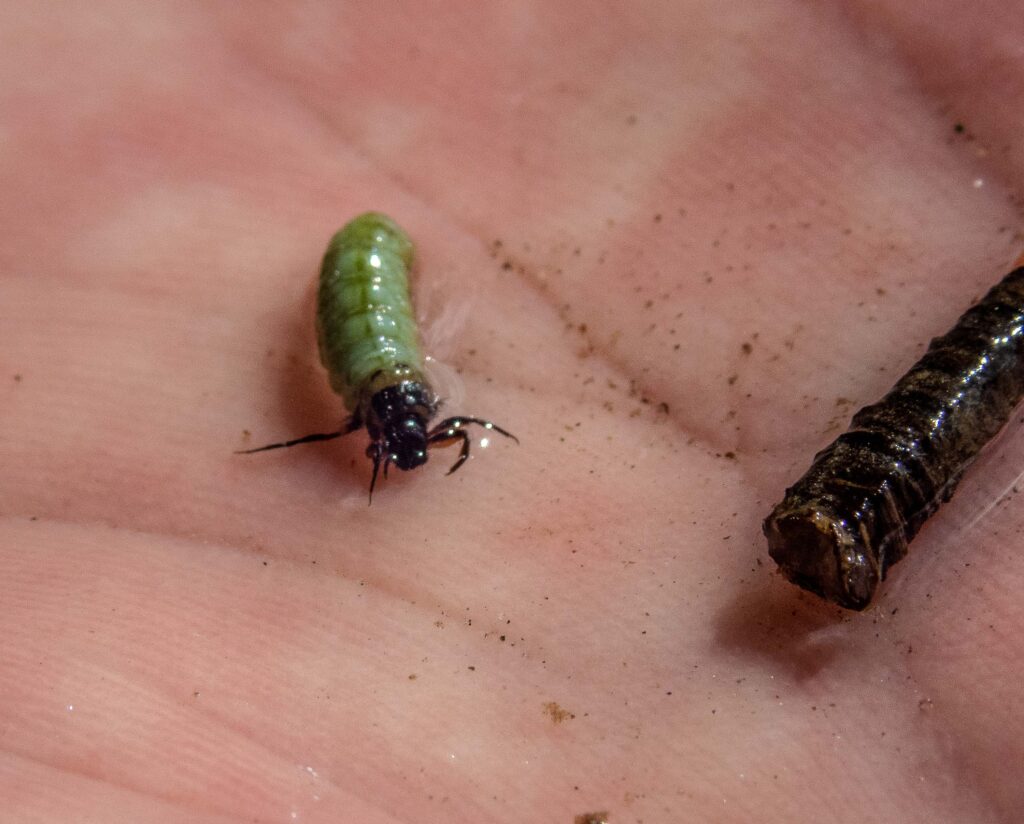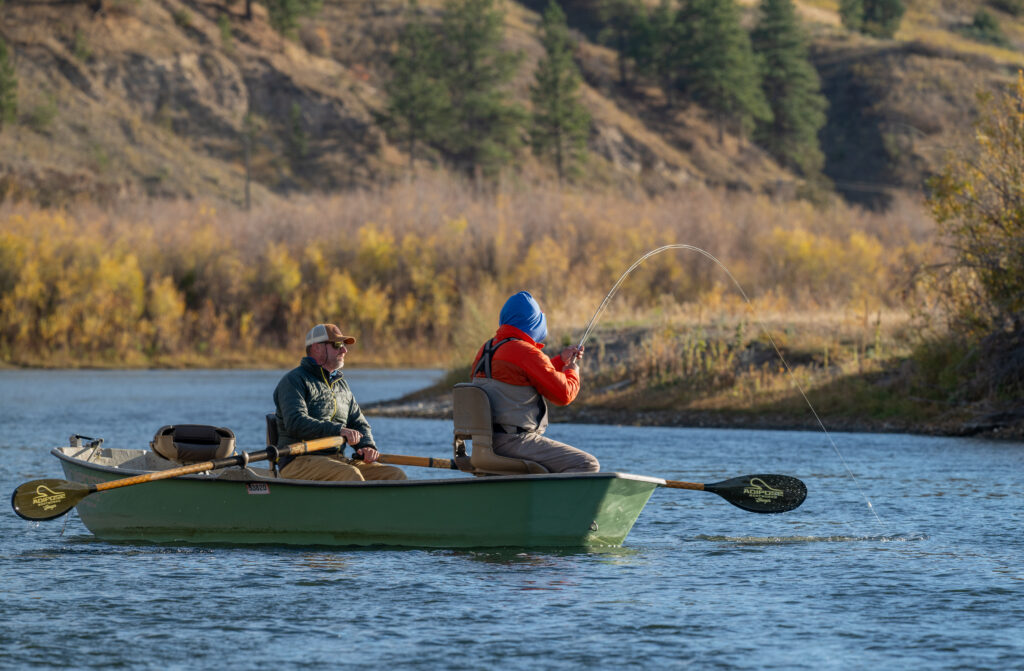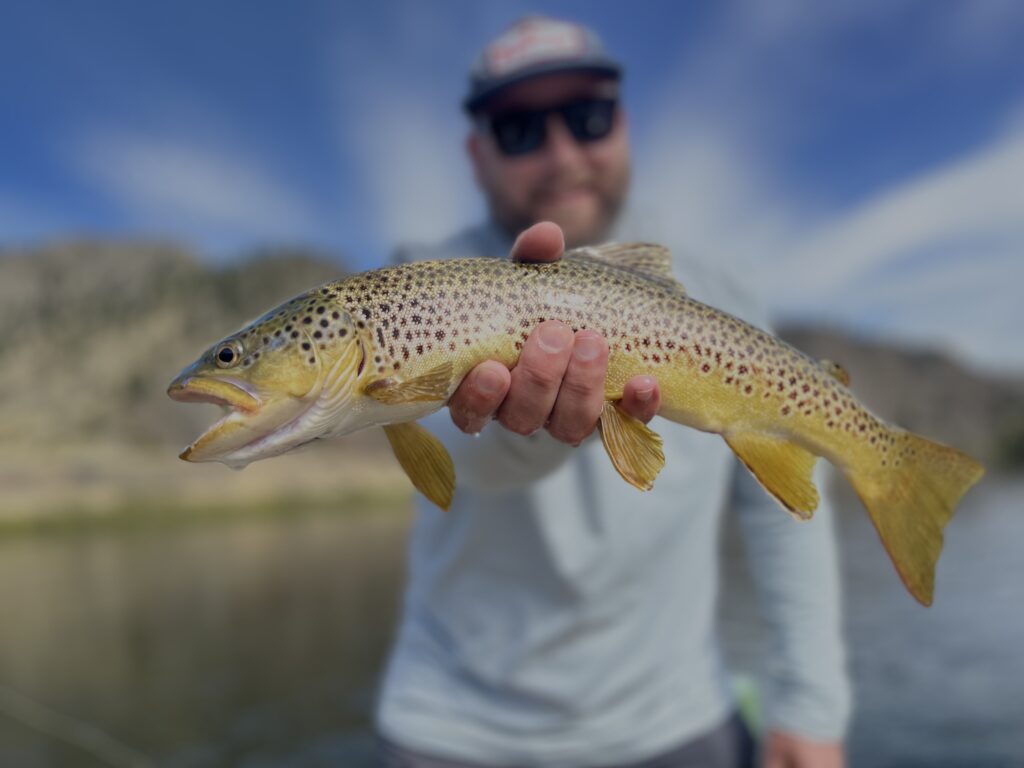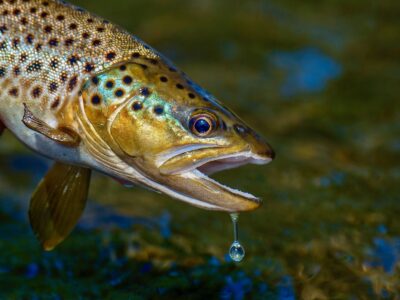From the month of May through Septmeber hard core dry fly anglers are either on the Missouri River or dreaming about it. Late spring is the beginning of dry fly season especially for those who love the Missouri river caddis hatch. The caddis hatch occurs every year when millions of caddis flies emerge from the river.
Fishing the Caddis fly hatch on the Missouri River
The Missouri is a diverse river and requires a bit of planning and preparation. Dry fly fishing on the Missouri River can challenging and technical on some days. Anglers should make sure they spend time practicing their casting and aerial mends if they want to fool big brown and rainbow trout. Having a good variety of caddis fly patterns is important as some fish may be selective. Understanding the life cycle and behavior of the caddis can help anglers choose the right fly pattern and presentation to help put more fish in the net.

The Best Time to Fish the Caddis Hatch on the Missouri River
Beginning in early summer we’ll see the first caddis on the river. Although this can vary with, weather and water temperatures. Anglers should monitor local fishing reports and river conditions to determine the best time to fish. Once the hatch is underway, plan to fish early in the morning or late in the evening when the caddis flies are most active. When fishing the caddis fly hatch on the Missouri River, anglers should look for riffles and where the trout are rising. The rise form when a trout eats a caddis is often splashy. Areas of focus should include rifles, runs, and tailouts where the current is moderate to fast. It’s also important to look for areas with structure, such as rocks and logs, where the trout can hide and ambush their prey. Watch the natural flies on the water and see how the fish are taking them.

Dry fly presentation
Fishing a caddis to rising fish is as exciting as it gets. A proven method is setting up above the fish and presenting a downstream cast. Avoid casting over the fish. It’s important to pay close attention to the drift and currents. Watch the fish and the current seams before casting. Make the first cast count! Reach cast, stack mending and watch them eat it!. Be ready to set the hook as soon as a trout takes the fly.
Caddis Fly Patterns
Some popular dry fly Caddis patterns you should have in your fly boxes for Missouri River include. Try experimenting with different patterns and sizes if the trout are being picky. In most cases Missouri river trout will eat most well presented offerings.
- X-Caddis:
- Similar to the Elk Hair Caddis, but with a more realistic profile. It has a split wing made of deer hair and a dubbed body. A great pattern for imitating caddis and other small insects. It sits lower on the surface film of the water, making it effective in slow-moving or still water.
- La Fontaine Sparkle Pupa:
- Represents the pupal stage of the caddis as it emerges from its cocoon. It often features a translucent or sparkle dubbing for the body. Effective during the emergence stage of caddis.
- Czech Nymph Caddis:
- A weighted nymph pattern designed to be fished subsurface. It often has a heavy bead head and a slender, segmented body. Works well in fast-flowing water where caddis nymphs are actively moving.
- Soft Hackle Caddis:
- Description: A wet fly pattern with a soft hackle collar. The body can be made with various materials, and the soft hackle imparts a lifelike movement. Effective when swung in the current to imitate emerging or egg-laying caddis.
- CDC Caddis / Corn Fed Caddis:
- This pattern incorporates CDC (cul de canard) feathers for the wing, providing excellent floatation and a realistic profile. Suitable for water where a high-floating fly is necessary.
Other Notable Hatches
In addition to the caddis fly hatch, the Missouri River offers excellent dry fly fishing opportunities year-round. The (PMD) Pale Morning Dun Mayfly, Trico, and the Blue Winged Olive are highly anticipated Mayfly hatches and my personal favorites.
Planning a Fly Fishing Trip
Accommodations along the Missouri River include Airbnb, lodges, and campgrounds. Many are just a short drive to the river. Early summer the river sees a fair amount of angling traffic from both drift boats and walk- wade fisherman. Anglers should practice catch-and-release as well as good fish handling. Wet your hands, crimp your barbs and limit the time the fish are out of the water. This will help us all enjoy the resource for years to come. Overall, fishing any hatch on the Missouri River can be an unforgettable experience. Give us a call to find out more about fishing the caddis hatch on the Missouri River.



 Crayfish Patterns for the Missouri
Crayfish Patterns for the Missouri
Leave a Reply